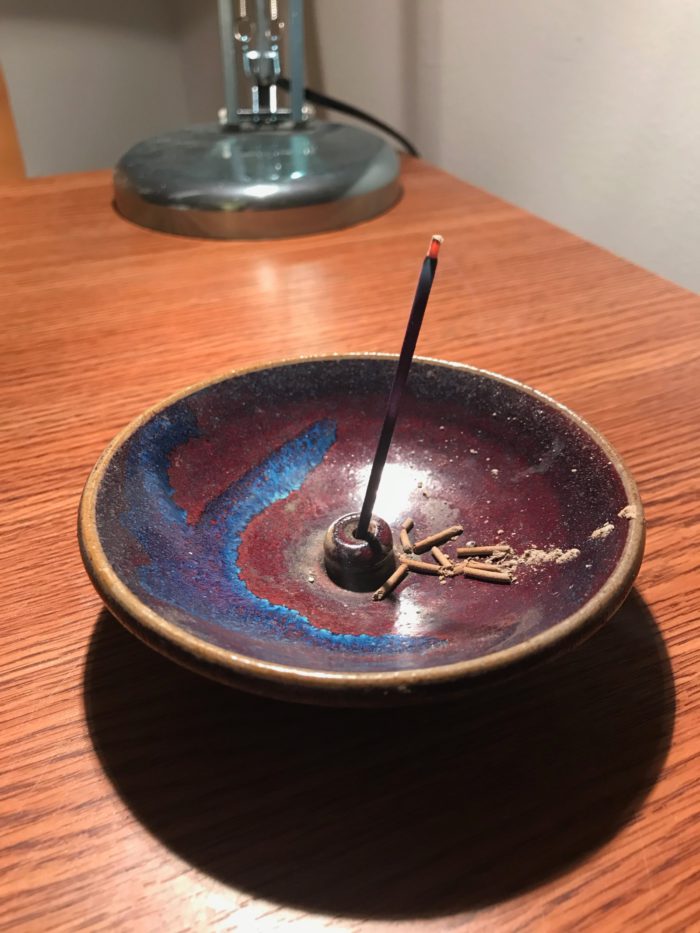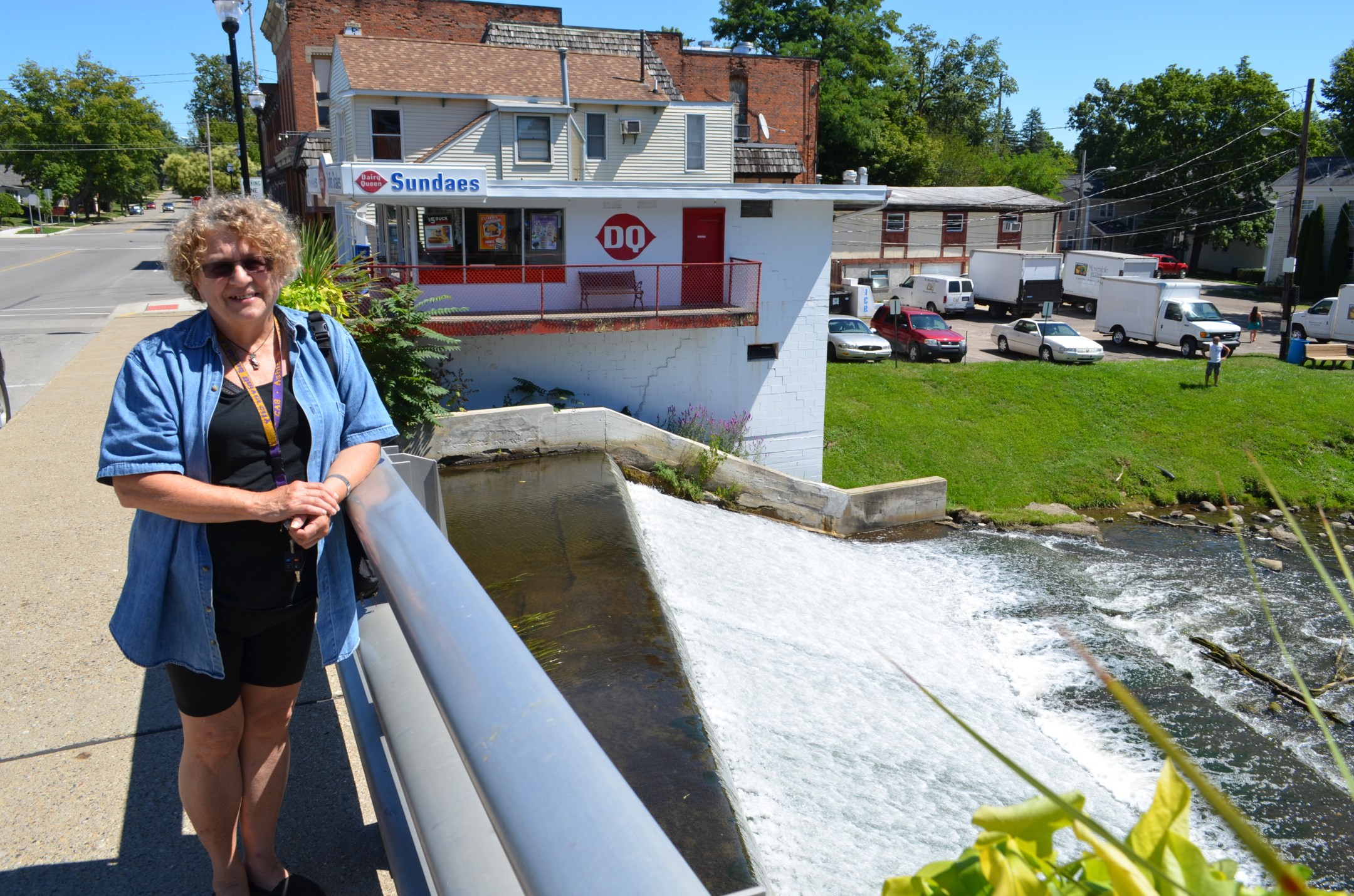
Many years ago, while talking death with Aunt Dee, she steered the conversation toward meditation. “I’ve been meditating for a few decades now. I hope that when it is my time to leave, I can consciously decide and consciously let go.”
She said things like that regularly in her soft, slow, laughing way. While we were all of the same corn and soybean fields, her voice sounded different. It wasn’t a southern accent, but it was a sound different than our people’s, and it was lovely.
Dee was not unlike her voice that way. She was clearly our kin in every possible way, but she was also lovely in her elsewhere-ness. While we have many creative people in our family, she and her sister Madge were the artists. Those two also had the widest taste for exploring ideas. Ideas and art. Things can get dangerous.
Ideas and art are how a person can leave the fast-paced corporate world, surrender the big money job, buy a minivan and make art. She did that. There is a romantic idea around the arts, that can make it seem joyful and leisurely. That’s about 5% of the truth. The other 95% is tough.
In the life of the larger family, we knew that on any given gathering day, beit Christmas or a wedding, it was a coin toss if she’d be there. There are terms like Seasonal Affective Disorder, or Chronic Fatigue Syndrome. Sometime she could be there, and other times, she just couldn’t do it. It wasn’t a gauge on love, it’s a matter of energy. Sometimes the world is difficult to bear. Sometimes it costs a lot of energy just to exist. That’s part of the 95%.
Creating is difficult. There’s the craft. You experiment. You hone. You become good at something. You get better at it. There’s also what goes into it. Inspiration is a term that falls flat as part of the mystique. It’s more about observation and feelings. It’s about taking those as energy and letting them flow through yourself and your craft. It involves staying in creative energy while your body tires and grows hungry or sleepy. It’s reading, meditating, coming into contact with nature, and family and the world and bringing it back to the craft. It’s exhilarating. It’s exhausting.
But the artist doesn’t just create all day, and do all of the life things that contribute to the creation. One must do all of that plus market themselves, and show and sell their work.
Several times in my adolescence, Dee invited me to “help her” at summer art shows. She picked me up at home in her minivan full with the hand-built wooden racks for her paintings, collages, chairs, portable booth, cashbox, old metal credit card machine, and cinder blocks for keeping everything grounded. I’d be gone with her from Friday afternoon until Sunday evening, and I saw this part of her artist life. The long hot days. The crowds. People buying the $20 dollar pictures, but not the large two thousand dollar cream colored abstract blast of life that she explained to me was her masterpiece. I’d never heard the word masterpiece. The idea of a masterpiece can draw someone into the creative life. If you knew Dee, at least some part of you has been drawn into the creative life.
The minivan or the idea of the minivan seems relevant when looking backwards at her life and remembering it. So many moments captured creatively and framed. Images of pain, struggle, profundity, beauty and bliss, signed, and neatly wrapped in heavy cellophane and carefully boxed to keep every corner intact. What image was of you? We were all safely and thoughtfully placed there in the plywood slots. Either directly or in essences.
The artist requires solitude. We certainly all knew that Dee was a solitary person. But the artist—at least in her case—also relishes collaboration. One of the most interesting and powerful thing about Dee was that she helped everyone to grow in their creativity. For some time, there was an interesting collaboration between Nona and Dee. Nona would take photographs of the Raisin River and the farmlands around Mimi and Pipi’s old house on West River Street. Then, Dee would paint them in the colors of Michigan winters dark browns of sleeping trees, the blonde of the wheat stalks and wild grasses, the black water and blue ice. It was a beautiful creative exchange.
While she didn’t have energy stores enough for every family event, she poured a lot of energy and love into creative collaborations with far corners of the family. Children. Grandchildren. Great grandchildren. Nieces and nephews. Grand nieces and nephews. And of course all the brothers and sisters in each of their various ways. Maybe building a drum with Steven and using a woodburner to decorate it. Perhaps a grand-niece or nephew experimenting with oil pastels.
Once she told me a story about my own father. She described him as a deeply creative person. I was surprised. I’d never heard him described that way. When I asked how he was creative, she explained with her special voice “He wasn’t a painter or someone who drew or anything like that, but he was creative in other ways. He was creative with food. Once he bought a pineapple and sliced it up and served it to everyone.” I still didn’t get it. “This was a long time ago. A pineapple in Deerfield Michigan in those days? Can you imagine?”
And right there’s the thing. She could spot creativity, and foster it.
Now you know, now you can see it too. And in that pineapple-in-Deerfield kind of way, Aimee and Dee had an incredible collaboration. At a point in time Dee decided to dedicate a large amount of her energy into spending time with Aimee either in Adrian or in Manchester for an occasional weekend sleepover. Meaningful time spent with each other, enjoying life, or having heafy conversations to guide a more gratifying life, is creativity. That moment most certainly ought to be framed and thoughtfully placed in the van.
There are countless others. I bet you’ve got a few in your mind.
Among her many visual artistic channels, realistic watercolor landscapes, ninja turtles, abstract acrylics, earrings and jewelry—who can name them all?—the most striking were always the collages. Especially the collages with torn sheet music, and shreds of her own paintings repurposed, and blobs of acrylic with metal or leaves all arranged into a beautiful expression of something that will never be quite placed. No matter how understandable or not; true. And moving.
Why am I telling you this?
Because once upon a time, while ashing cigarettes into a clean hand-washed tuna can, and drinking homemade carrot and apple juice, she talked about the wounds of growing up catholic, and buddhism, and all the quantum stuff. She spoke of family, and silence, and decision making. She spoke of course of creativity, and of how people hurt each other, and there’s always healing to do. And she talked about how she’s been meditating for a few decades now. And that when it is her time to leave, she hopes she can consciously decide and consciously let go.
Now maybe her death wasn’t exactly how she envisioned it, but it’s doubtful she knew where any of those collages were going to end up while she was beginning them.
It does seem however, that starting your departure from this world in the company of one of your most cherished people seems like a decision she’d have been glad to consciously decide to do before consciously letting go.
It was a life well created. The paint is drying.
Look for her signature.


